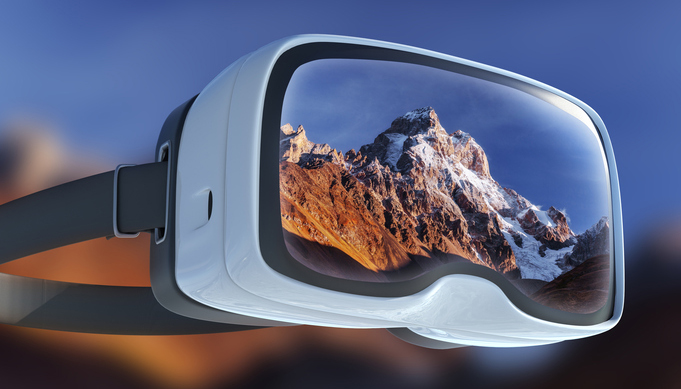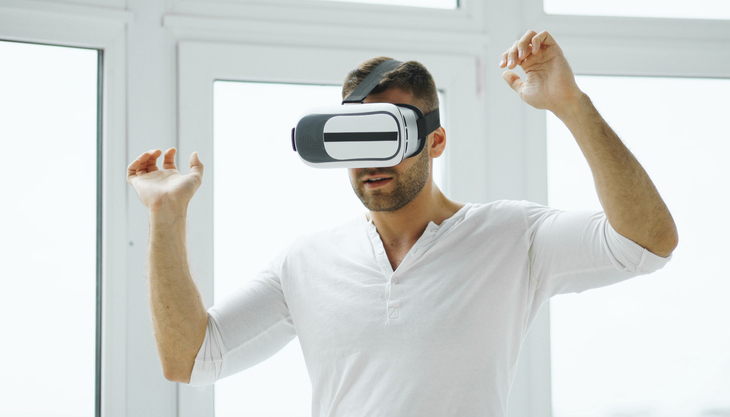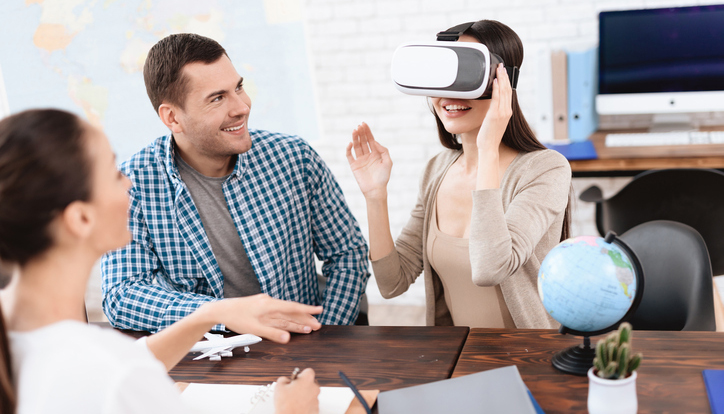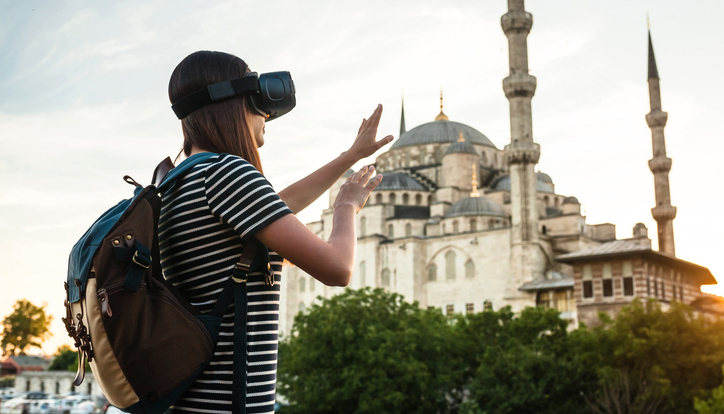The future we imagined not so long ago is now here, and some of the solutions we’d previously only seen in science fiction movies are now available thanks to technology. In this case, we’re talking about virtual reality as its development and use are increasingly more widespread and varied.
Video games are the first thing that springs to mind when we talk about virtual reality, but we never think about a use for it that’s aimed at tourism, although there are now many examples and more and more applications of virtual technology that we see in this area nowadays.
As we’re all aware, when it comes to tourism, our expectation has a lot to do with the satisfaction of our own experience in the destination, but at the same time, the seduction of the potential tourist is important to attract them and get them to choose a particular place or service during their holidays. In both cases, virtual reality can play a key role in the tourism sector.
In the tourism industry today, there’s a demand with more and more competition and fluctuation and virtual reality can show the destination more realistically and therefore help us to differentiate ourselves.

Very often photos or videos from a single perspective are not capable of narrating the true strength of the destination, but if we apply technology, we can speak about the same product with far more resources. This way, travellers can check these attractions in advance and value them appropriately.
This way, holiday destinations have a significant influence during the entire process of searching for information, and especially when it comes to customers making decisions as it increases the desire to purchase a tourist product.
The Fachhochschule University in Salzburg recently conducted an experiment comparing a 360º promotional video of Dubrovnik with a regular tourism brochure containing the same information. The study found that immersive viewing of the video sparked up to 67% more desire to visit the destination.
Some companies are already using virtual reality videos to show potential tourists destinations and the different services available so that they can choose before their purchase. But the visit can also be an experience in itself, as 3D simulations of real places and historical monuments allow many uses, from low-cost travel options to training in accessible experiences for people who cannot travel to specific destinations or perform certain activities.
And how does it work?
Virtual reality provides an immersive physical capacity that isolates us from all other outside influences and makes us consciously concentrate all our senses on what we are perceiving. But it also has a great ability to show content through a large audiovisual dimension, and this encourages surprise and total experience that makes it stand out in our memory compared to other more conventional options.
By using VR devices, visitors are immersed in the environment and can look and move around to observe everything. These 360º videos give potential customers a better idea of what to expect and whether the experience meets with their needs.

Various examples
Currently, the most significant use of this technology is when customers visit a point of sale, and companies like Flight Centre, Virgin Holidays and Thomas Cook have already tried it in the way they know best: inspiring their travellers. Thomas Cook recently stated that in just 3 months it had achieved a 40% return on investment with bookings in the UK and Germany.
Hotels and airlines have also decided to include VR in their marketing actions. The Marriot Hotels chain introduced a virtual reality travel experience that with Oculus Rift devices allows you to travel virtually to different destinations where the chain is present without having to pack your bags or book a flight.

Shangri-La Hotels and Best Western have also done the same by creating actions to help their customers learn more about their products, and airlines like Lufthansa have received some awards in virtual reality marketing campaigns.
Numerous virtual reality technological proposals of destinations were presented this year, at the 2018 edition of FITUR, confirming it as an interesting investment for promoting tourism. One of the most impressive examples is Mexico, which has been investing in virtual reality since 2014. This year, Mexico Tourism incorporated innovative, immersive experiences to travel in hot-air balloons and fly over pyramids, along with other activities where it applied augmented reality technology.
If 2016 served to present virtual reality technology applied to tourism and 2017 made it grow (as we can see in the Thinking Party forum), 2018 has caused it to evolve and will strengthen it even more.






